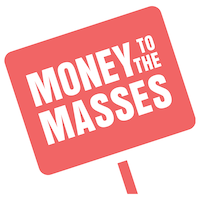 Where should I invest £50,000 to £100,000?
Where should I invest £50,000 to £100,000?
I have inherited £50,000 and want to know the best way to invest money to get the best investment returns. I want to invest £50k myself to keep costs down rather than pay a financial adviser to do it for me. So what is the best way to invest £50,000 for growth?
Damien's response:
(The following response is by Damien Fahy, one of the most widely quoted investment experts in the UK national press, including The Telegraph and The Sunday Times)
This is a great question. I have broken my answer into two parts, the short answer and the long answer. The short answer quickly shows you the easy way to invest £50,000 while keeping costs down, while still beating the market.
The long answer will show you how to invest £50,000 whether you are a seasoned investor or a complete beginner. It will show you:
- What the best savings rates are for £50,000
- The types of assets you could invest in
- The potential return and where to invest £50k
- How to choose your own portfolio of funds
- A simple solution for beginners
- How I successfully invest £50,000 of my own money and beat the market and professional fund managers
The short answer:
Firstly you can see how I successfully invest £50,000 of my own money live. You will see how I (and those who follow my portfolio) comfortably beat the market and over 80% of professional multi-asset fund managers (who manage over £133bn) by managing investment risk and with only a few minutes of effort every month. The article also tells you how I turned £50,000 into almost £60,000 in just two years.
Alternatively, you can download this easy to understand guide on ‘The easy & cheapest way to invest £50,000 and beat the market‘. The research in the guide was even reproduced by The Telegraph. The guide is FREE to download and will tell you the most cost-effective way to invest your money as well as how to ensure your money survives a future market rout.
Invest £50,000 the easy way and beat the market
Find out:
– how to invest £50,000 to get the best return while keeping costs low.
– the optimum ‘invest and forget' asset allocation to outperform the market
– how to get a professional investment manager to run your portfolio for FREE
Download the guideThe full answer:
Below I walk you through how to get the best return on your £50,000 or £100,000 investment.
Best savings accounts for £50,000
The first thing you need to determine is how long your investment timeframe is. Or in other words, when will you need to access your £50k. A good rule of thumb is that if you need to access your money within the next 5 years then you should just put your money into a savings account. That is because investing in assets other than cash carries the risk of you losing money. Therefore the shorter your investment timeframe the greater the likelihood you could be forced to crystalise a loss. Investments move up and down over time so you need to be comfortable with this.
However, cash is a valid investment asset in its own right. If you do decide to put the money in a savings account then you need to make sure to get the best savings rate. If you plan to put £50,000 or more into a savings account then I suggest you read the 7 must-know rules of saving large sums. It contains advice on how to get the best interest rates on your money and how to protect your savings from the eventuality that your bank or building society goes bust. Additionally, check out our guide on ‘How to invest £50,000‘.
How to get the most interest on your savings
Provides you with 7 steps to managing large amounts of cash
Download the free guideFor a full round-up of the best savings rates available right now, check out our regularly updated Best Savings Rates article. Alternatively, click on the links below to view the best savings account by category.
- Best High Interest Current Accounts
- Best easy Access savings accounts
- Best fixed Rate Bonds
- Best variable rate ISAs
- Best fixed rate ISAs
- Best notice savings accounts
If you do opt for putting the money into a savings account then you need to stay on top of things as the interest rate will likely fall over time, especially if the account had an introductory offer.
If you do opt to put your money in a savings account then you would likely get up to 5% interest a year if you want instant access, and this will be liable to income tax if it is outside of a cash ISA. Remember to ensure that your savings are covered by the Financial Services Compensation Scheme so your money is safe should your bank go bust.
Investment ideas for £50,000
So assuming you are happy with investment risk what types of asset could you invest in?
Buy-to-let property
As a nation we have a love affair with property. Yet, despite what people tell you the reality is that house prices tend to only keep pace with inflation, having increased by just under 3% a year over the last 50 years. However, that masks some huge market falls.
Part of the reason for its popularity is that property is relatively easy to understand. You buy a house, get people to live in it for rent. Then you sell it when you get fed up. Well that's the theory anyway. The problem is that it is seldom that straightforward. While the average gross rental yield in the UK is around 6% this doesn't take into account a whole host of costs such as the mortgage cost, insurance, letting agent costs (if used), void periods, repairs and eventual selling costs.
The reason people do make money on property is that they often use their own money (say £50,000 or £100,000) as a deposit and then take out a buy-to-let mortgage in order to buy the property. Or in other words, they leverage their investment. Would you borrow money and invest it in the stock market? The answer would almost certainly be no, but people are more comfortable with the idea when it comes to property.
Buy-to-let’s biggest attraction is that it is seen as low risk and easy to understand. Yet the problem is it’s a difficult investment to manage which is why it is not a great investment for most people.
Investing in assets via funds
Personally, I prefer to invest via funds. Funds are collective investments which pool investors money together so they can benefit from economies of scale and reduce costs. There are thousands of funds out there investing money in a range of assets including shares, bonds, commodities and property. Funds are run by a manager whose job it is to analyse a company's accounts, in the case of funds investing in shares, and pick the best shares to buy.
What this means is that you can then pick the best funds for you and build a portfolio which covers a range of assets such as those mentioned in the next section. Without using funds it would be very difficult to build a diverse and cost-effective portfolio if you bought assets directly. The beauty of funds (be they unit trusts, investment trusts or exchange-traded funds) is that you can buy and sell them very easily.
I suggest that you download the guide to investing in funds to find out all you need to know about how to invest in funds.
How to invest using funds
The best guide we've found telling you everything you need to know to successfully invest in funds.
Download the guide nowBasic asset types and historic returns
You can invest in funds via a Stocks and Shares ISA or a pension. The beauty of doing so is that you can then build a portfolio of funds to maximise your returns. Below I list two key asset types you will likely invest in and their potential returns.
- Equities (shares) – these are company shares traded on the stock exchange. Yet as a UK investor you do not just have to invest in UK shares, you can invest in shares from around the world. Some investors do invest in shares directly after researching a company, yet this carries much higher investment risk than investing via a fund as you'd be lumping all your eggs in one or two baskets. For example, a manager of a fund specialising in UK equities would typically invest in between 50 and 100 different companies. Shares are typically medium to high risk investments. According to the Barclays Equity Gilt Study equities have produced an average return of around 5.5% a year over the last 50 years. Yet in that time there have been big market falls as well as rallies.
- Bonds – bonds are loans to companies or governments that are tradable. They are low risk investments and have historically moved in the opposite direction to equities. Again, there is a whole range of types of bonds from around the world which dictates the types of risks and returns you might expect. Average annual return from UK bonds over the last 10 years is around 2%.
Follow me as I invest £50,000 of my own money
The key to successful investing is knowing what to invest in and when. This is where the world of financial services tries to pull the wool over people's eyes. They do this by making out that it is far more complex than it is but also overstating their own expertise. For example, most financial advisers have no investment expertise, instead picking from a short list of funds often promoted by the people actually running them.
That's why no other commentators or IFAs run an open portfolio to show how good they are at investing. It is for this reason that I actually invest £50,000 of my own money for the benefit of 80-20 Investor subscribers. 80-20 Investor is my DIY investing service which teaches people how to run their own money and make sure they are in the best performing funds. I continually update subscribers with the funds I buy and why.
I have been running the portfolio for over nine years and in that time we've experienced market-sell offs, a Chinese equity market collapse, a commodity crash, Europe almost imploding as a result of the Greek debt crisis, Brexit, a shock US election win by Donald Trump, a subsequent US-China trade war, the coronavirus outbreak and a war in Ukraine.
Yet despite this, my portfolio is comfortably beating professional fund managers, financial advisers, discretionary fund managers and passive portfolios since I began running it in March 2015, as shown in the table below. The reason I have been able to do this, while only typically exposing around 50-60% of my money to the stock market, is that I have moved in and out of markets and altered my portfolio using the 80-20 Investor algorithm. I have turned my original £50,000 into £87,575.
| Name |
Profit from March 2015 to November 2024
|
| My 80-20 Investor £50,000 portfolio | 75.15% |
| Average professionally managed balanced multi-asset fund (Mixed Investment 40%-85% Shares Index) | 62.38% |
| Passive Vanguard benchmark (portfolio of Lifestrategy funds to reflect my portfolio's changing equity content) | 54.11% |
| AFI Balanced (benchmark of portfolios picked by financial advisers) | 56.54% |
| Average professionally managed cautious multi-asset fund (Mixed Investment 20%-60% Shares Index) | 36.47% |
You can find out more about 80-20 Investor and see how it can help even complete novices run their own money.
80-20 Investor is the DIY investment service from MoneytotheMasses.com
We not only teach you how to run your own money but also provide research and investment fund shortlists.
Find out more about 80-20 InvestorAdvice on how to invest your own money
If you want to run your own money then it is possible to build your own investment portfolio successfully. The three key things that all successful investors do is
- Keep costs down – they do this by keeping investment charges low
- Minimise tax – you need to ensure that you pay as little tax on your profits as possible. You can do this by investing in funds within a Stocks and Shares ISA or a pension
- Stick to a proven investment strategy
The last one is the biggest stumbling block for DIY investors. But what strategy should you choose when running your own money? How can you work out where to invest and when?
I answered these questions by analysing the performance of (plus talking to) fund managers and looking at the tools and strategies the most successful ones use. On top of that, thousands of academic papers have been published on the topic, some of which have analysed investment markets going back as far as 100 years. Yet it is possible to distil this down so that you can invest your money with just a few minutes effort a month.
It is exactly how I invest my own money (such as the aforementioned £50,000). From my research I discovered:
- The one thing keeping investment professionals up at night
- The most important skill in fund management
- Why fund managers underperform & the 1st advantage DIY investors have over them
- The second advantage you have over professional fund managers
- The simple tool to help you beat the market
- The most important investment lesson you will ever learn
- The investment process fund managers want to keep to themselves
- I finally answered the question of whether passive or active investing is best
- Why you should stop reading the money pages & how to build a portfolio
You can read my full analysis in my free short email series How to become a successful DIY investor’ FREE e-course. You will receive 10 short emails and each takes just two minutes to read.
Alternatively, the simple & cheap solution for beginners
But if you want to simply benefit from the cost savings associated with running your own money but don't want to manage your own portfolio then, there are a number of companies who can manage stocks and shares ISAs on a discretionary basis for a relatively low fee or even free.
We provide a roundup of these companies in our article ‘Which is the best Robo-adviser in the UK?‘.





